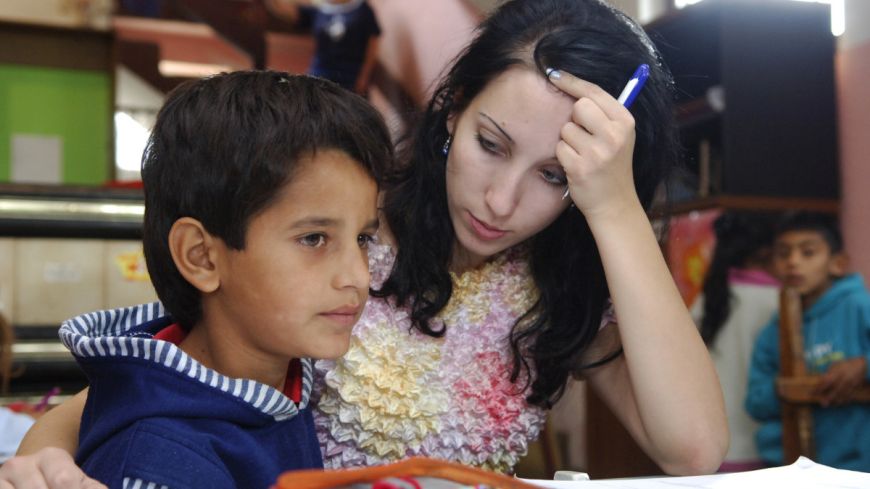Αρχική » Άρθρα με ετικέτα 'Roma'
Αρχείο ετικέτας Roma
Results
Final results
Guide for Roma Inclusion in PDF
Gymnasio Zipariou 2020-1-EL01-KA201-078810 GUIDE BG
Gymnasio Zipariou 2020-1-EL01-KA201-078810 GUIDE EL
Gymnasio Zipariou 2020-1-EL01-KA201-078810 GUIDE EN
Gymnasio Zipariou 2020-1-EL01-KA201-078810 GUIDE ES
Gymnasio Zipariou 2020-1-EL01-KA201-078810 GUIDE IT
Gymnasio Zipariou 2020-1-EL01-KA201-078810 GUIDE PT
Gymnasio Zipariou 2020-1-EL01-KA201-078810 GUIDE HU
Guide for Roma Inclusion In Word
2020-1-EL01-KA201-078810 Roma students’ inclusion Guide PART A_BG
2020-1-EL01-KA201-078810 Roma students’ inclusion Guide PART B_BG
2020-1-EL01-KA201-078810 Roma students’ inclusion Guide PART A_EL
2020-1-EL01-KA201-078810 Roma students’ inclusion Guide PART B_EL
2020-1-EL01-KA201-078810 Roma students’ inclusion Guide PART A_EN
2020-1-EL01-KA201-078810 Roma students’ inclusion Guide PART B_EN
2020-1-EL01-KA201-078810 Roma students’ inclusion Guide PART A_ES
2020-1-EL01-KA201-078810 Roma students’ inclusion Guide PART B_ES
2020-1-EL01-KA201-078810 Roma students’ inclusion Guide PART A_IT
2020-1-EL01-KA201-078810 Roma students’ inclusion Guide PART B_IT
2020-1-EL01-KA201-078810 Roma students’ inclusion Guide PART A_PT
2020-1-EL01-KA201-078810 Roma students’ inclusion Guide PART B_PT
2020-1-EL01-KA201-078810 Roma students’ inclusion Guide PART A_HU
2020-1-EL01-KA201-078810 Roma students’ inclusion Guide PART B_HU
Photos from Roma life in partner countries
Gymnasio Zipariou 2020-1-EL01-KA201-078810 Photos
For more results from the project, visit Erasmus platform here
Presentation at TPM 3 Kos Greece Education of Roma Children

The Council of Europe began its involvement with the Roma in 1969 by adopting the first official text on the “situation of Gypsies and other Travellers in Europe”. In 1983 the Council organised the first training seminar for teachers working with Roma children. In 1993 the Roma population was declared a European minority. (περισσότερα…)
Open your mind 2- go beyond stereotypes!
There are nearly 10 million Roma living in the 47 member states of the Council of Europe. They suffer from widespread sterotyping and prejudice. In order to open our minds to their true situation we need to start teaching the reality in schools. This video, aimed mainly at children, deals with some common misconceptions concerning the Roma, through the scenario of a teacher addressing a class of pupils with a series of questions. For example, he asks them what kind of jobs they think Roma do, and which part of the world they came to Europe from.
Watch the video at
https://www.coe.int/en/web/human-rights-channel/-/open-your-mind-go-beyond-stereotypes-
Roma in Portugal
 The Roma in Portugal, known in spoken Portuguese as ciganos, are a minority ethnic group. Exact numbers in the country are unknown—estimates vary from 30,000 to 50,000.
The Roma in Portugal, known in spoken Portuguese as ciganos, are a minority ethnic group. Exact numbers in the country are unknown—estimates vary from 30,000 to 50,000.
As implied by some of their most common local names, the native Portuguese Roma belong to the Iberian Kale (Kalos) group, like most of the fellow Lusophone Brazilian ciganos, and the Spanish Romani people, known as gitanos, that share their same ethnic group. Their presence in the country in and around Minho goes back to the second half of the 15th century when they crossed the border from neighbouring Spain. Early on, due to their sociocultural differences and nomadic lifestyle, the ciganos were the object of fierce discrimination and persecution.
The number of Roma in Portugal is difficult to estimate, since it is forbidden to collect statistics about race or ethnic categories in the country. According to data from Council of Europe‘s European Commission against Racism and Intolerance there are about 40,000 to 50,000 spread all over the country. According to the Portuguese branch of Amnesty International, there are about 30,000 to 50,000. The national High Commissioner for Migrations places the number at around 37,000.
History
Roma in Italy, Roma in Reggio Calabria
THE CONDITION OF ROMA, SINTI AND CAMINANTI COMMUNITIES IN ITALY
The Roma, Sinti and Caminanti (RSC) communities in Italy are characterized by the heterogeneity of the groups, by their linguistic-dialectal variety, as well as by different cultures. The various attempts over the years to promote integration, inclusion and their recognition as a minority (national or linguistic), confirm the complexity of the condition of Roma, Sinti and Caminanti. This status quo can be well understood, if we take into account the fact that when we talk about RSC communities, we are referring to: Italian citizens; foreign citizens belonging to other EU countries; foreigners, citizens of non-European countries; foreigners, who have been granted the right to asylum or subsidiary protection; (de facto) stateless people, born in Italy from de facto stateless people In particular, it should be borne in mind that, at present, the minority of RSC is not concentrated in a specific area of the national territory, but rather spread throughout the country. (περισσότερα…)







